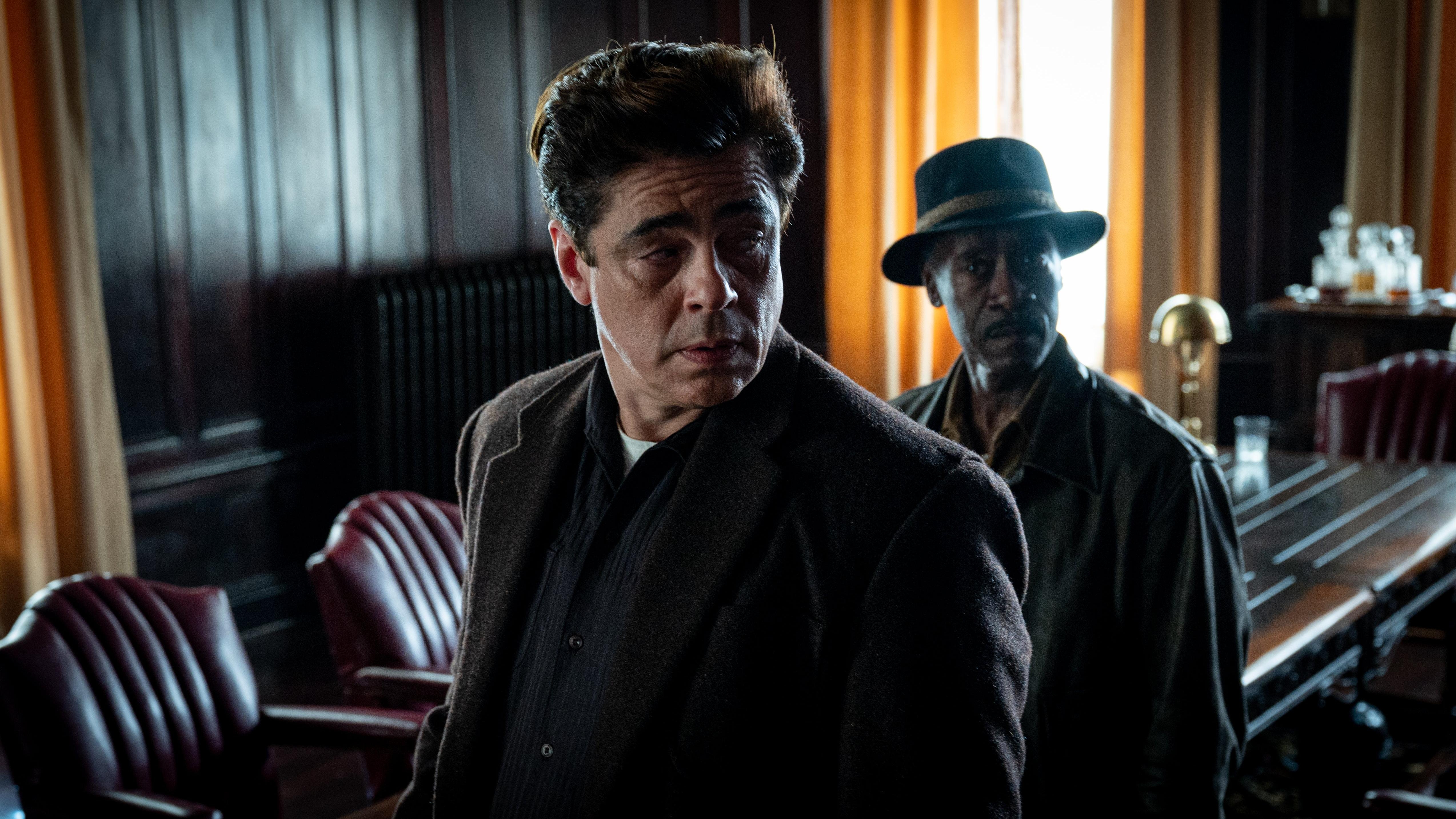Desperation pays darkly comic dividends in Steven Soderbergh’s No Sudden Move
Soderbergh returns to his crime-movie wheelhouse with a twisty new caper

Movies routinely place characters in desperate, life-or-death situations, but rarely do we see them behave in a genuinely desperate way. No Sudden Move, a period crime drama written by Ed Solomon and directed by Steven Soderbergh, corrects this oversight in a way that’s at once hilarious and distressing. With masked men holding his wife and young children at gunpoint back at home, mild-mannered businessman Matt Wertz (David Harbour) shows up at his boss’ house, demanding a certain hush-hush document that the criminals seek. When the boss refuses to comply, Wertz increases the pressure with a series of quasi-apologetic threats, flailing in his effort to communicate just how serious he is without actually explaining what’s going on (since another masked gunman is listening from just outside the door). “I’m gonna punch you now, sir,” Wertz warns, practically in tears, after tackling his boss to the floor. “I’m punching you. This is gonna be a punch.” Refreshing words to hear from someone who’s clearly never thrown one before.
Memorably offbeat moments of that sort, executed by a superb ensemble cast, keep No Sudden Move humming even when the film’s convoluted, MacGuffin-heavy plot threatens to bog things down. Set in 1954 Detroit, it opens with the gunmen: Curt Goynes (Don Cheadle), who’s just out of prison and seeking quick cash to buy back some land he claims was taken from him; Ronald Russo (Benicio Del Toro), suspicious of everyone; and a vaguely psychopathic-seeming dude named Charley (Kieran Culkin). All three have been hired by a kingpin’s henchman (Brendan Fraser, who’s somehow turned into Sydney Greenstreet) to “babysit” Wertz’s family while he retrieves the document, which is supposed to be in his boss’ office safe but turns out not to be. Among the numerous complications that ensue are Wertz’s wife (Amy Seimetz) learning that he’s been planning to run off with his boss’ secretary (Frankie Shaw) and Russo’s secret romantic involvement with the moll (Julia Fox) of the aforementioned kingpin (Ray Liotta). Also, was this really a three-man job, or is it possible that certain parties are considered very expendable?
It’s a lot to keep track of, and that’s without even mentioning the corrupt cop (Jon Hamm) investigating an ostensible act of lethal self-defense at Wertz’s house, or the late-breaking, significant, unbilled cameo appearance by one of Soderbergh’s regular collaborators. Solomon’s screenplay lightly flirts with some socially conscious ideas: The MacGuffin, when revealed, reflects real-life corporate chicanery from that era, and Goynes’ personal crusade involves “urban renewal” measures that seized land from African-American homeowners via the abuse of eminent domain, though you’ll need to listen carefully (or be familiar with the former Black Bottom neighborhood) to pick up on that. And it’s easy to be distracted, because there’s always something wonderfully tangential or goofy happening. Plenty of movies like this include a scene in which someone has to answer the door with a gun pointed at them and pretend that everything’s fine; very few expertly build the tension and then immediately defuse it by having the victim look out the window, see the neighbor lingering, and mutter “Well, I don’t think that’s the end of that.”
Speaking of distraction, Soderbergh continues to favor wide-angle lenses and unconventional camera angles—a practice that began when he started shooting movies on a modified iPhone a few years ago. He clearly knows that this look annoys some people, and just as clearly doesn’t care. It’s particularly out of place, though, in a film that otherwise emulates pugnaciously melodramatic (but visually unemphatic) ’50s classics like Nicholas Ray’s On Dangerous Ground. Those films didn’t feature the minor irising effect seen here, with the corners of the frame slightly dimmed, and they almost always avoided lenses that warp any object not located at dead center. One especially bizarre shot in No Sudden Move places Cheadle at the frame’s extreme left and another actor in the middle, creating a physical disparity between them so dramatic that they might as well be standing in an Ames room. There’s no plausible reason to emphasize distortion in this way, on either a conceptual or a thematic level. It’s just a weird directorial choice—one that’s easier to ignore, or to forgive, when a group of talented actors are having this much desperate fun.